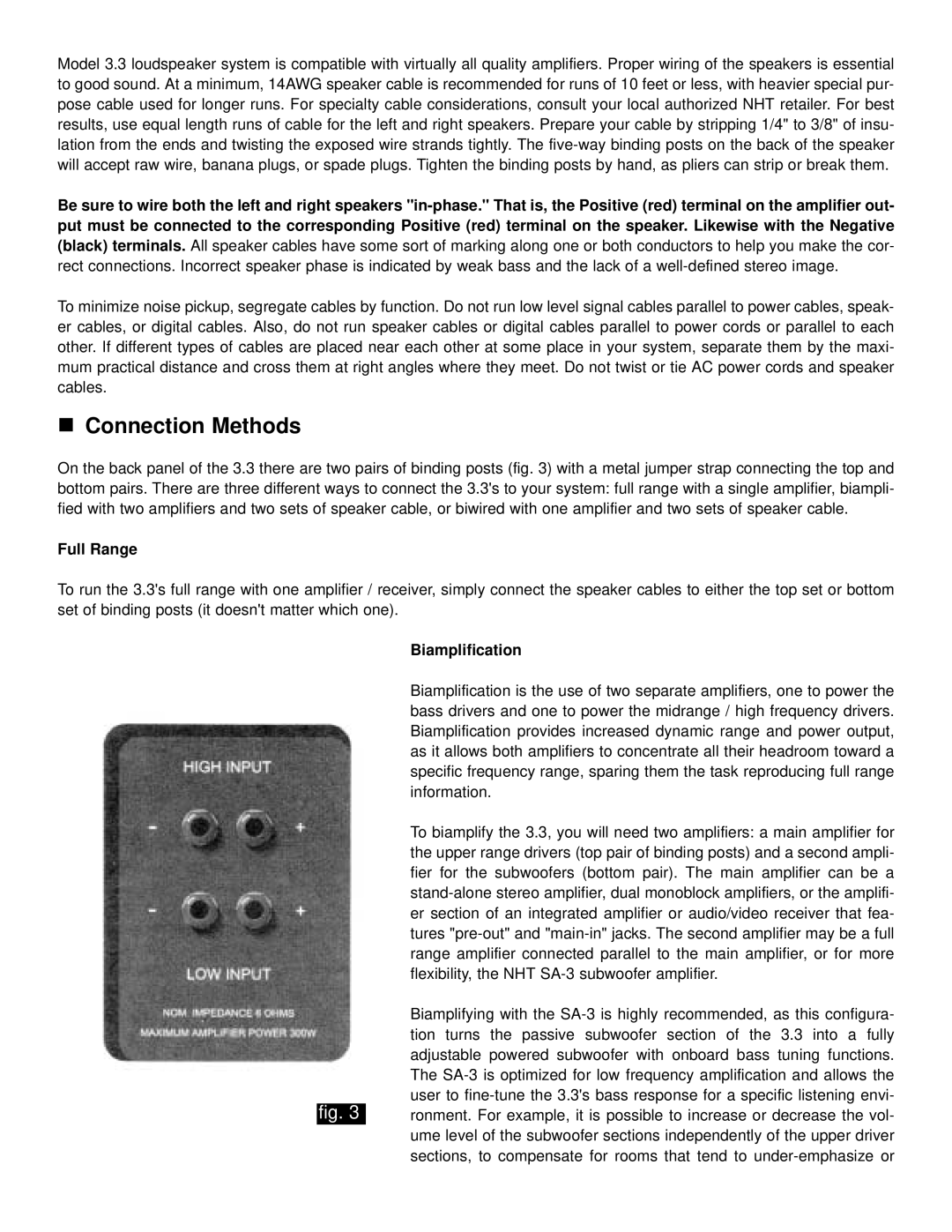
Model 3.3 loudspeaker system is compatible with virtually all quality amplifiers. Proper wiring of the speakers is essential to good sound. At a minimum, 14AWG speaker cable is recommended for runs of 10 feet or less, with heavier special pur- pose cable used for longer runs. For specialty cable considerations, consult your local authorized NHT retailer. For best results, use equal length runs of cable for the left and right speakers. Prepare your cable by stripping 1/4" to 3/8" of insu- lation from the ends and twisting the exposed wire strands tightly. The
Be sure to wire both the left and right speakers
To minimize noise pickup, segregate cables by function. Do not run low level signal cables parallel to power cables, speak- er cables, or digital cables. Also, do not run speaker cables or digital cables parallel to power cords or parallel to each other. If different types of cables are placed near each other at some place in your system, separate them by the maxi- mum practical distance and cross them at right angles where they meet. Do not twist or tie AC power cords and speaker cables.
!Connection Methods
On the back panel of the 3.3 there are two pairs of binding posts (fig. 3) with a metal jumper strap connecting the top and bottom pairs. There are three different ways to connect the 3.3's to your system: full range with a single amplifier, biampli- fied with two amplifiers and two sets of speaker cable, or biwired with one amplifier and two sets of speaker cable.
Full Range
To run the 3.3's full range with one amplifier / receiver, simply connect the speaker cables to either the top set or bottom set of binding posts (it doesn't matter which one).
Biamplification
Biamplification is the use of two separate amplifiers, one to power the bass drivers and one to power the midrange / high frequency drivers. Biamplification provides increased dynamic range and power output, as it allows both amplifiers to concentrate all their headroom toward a specific frequency range, sparing them the task reproducing full range information.
To biamplify the 3.3, you will need two amplifiers: a main amplifier for the upper range drivers (top pair of binding posts) and a second ampli- fier for the subwoofers (bottom pair). The main amplifier can be a
Biamplifying with the
user to
